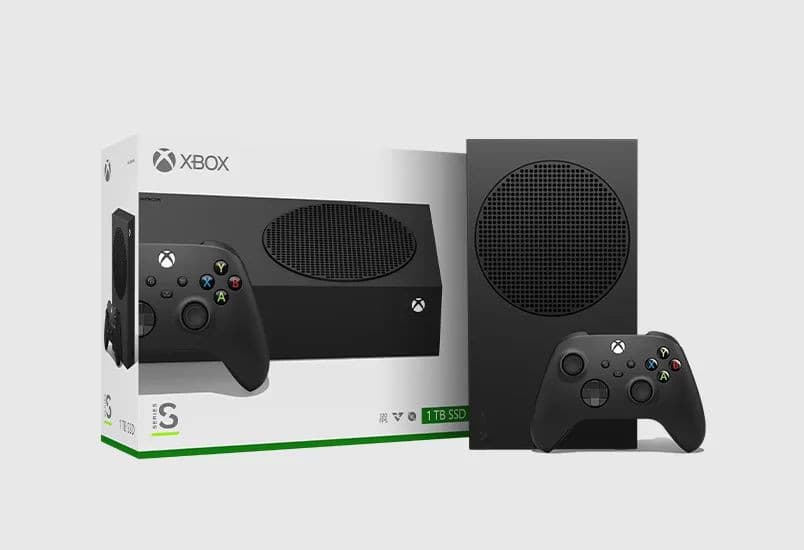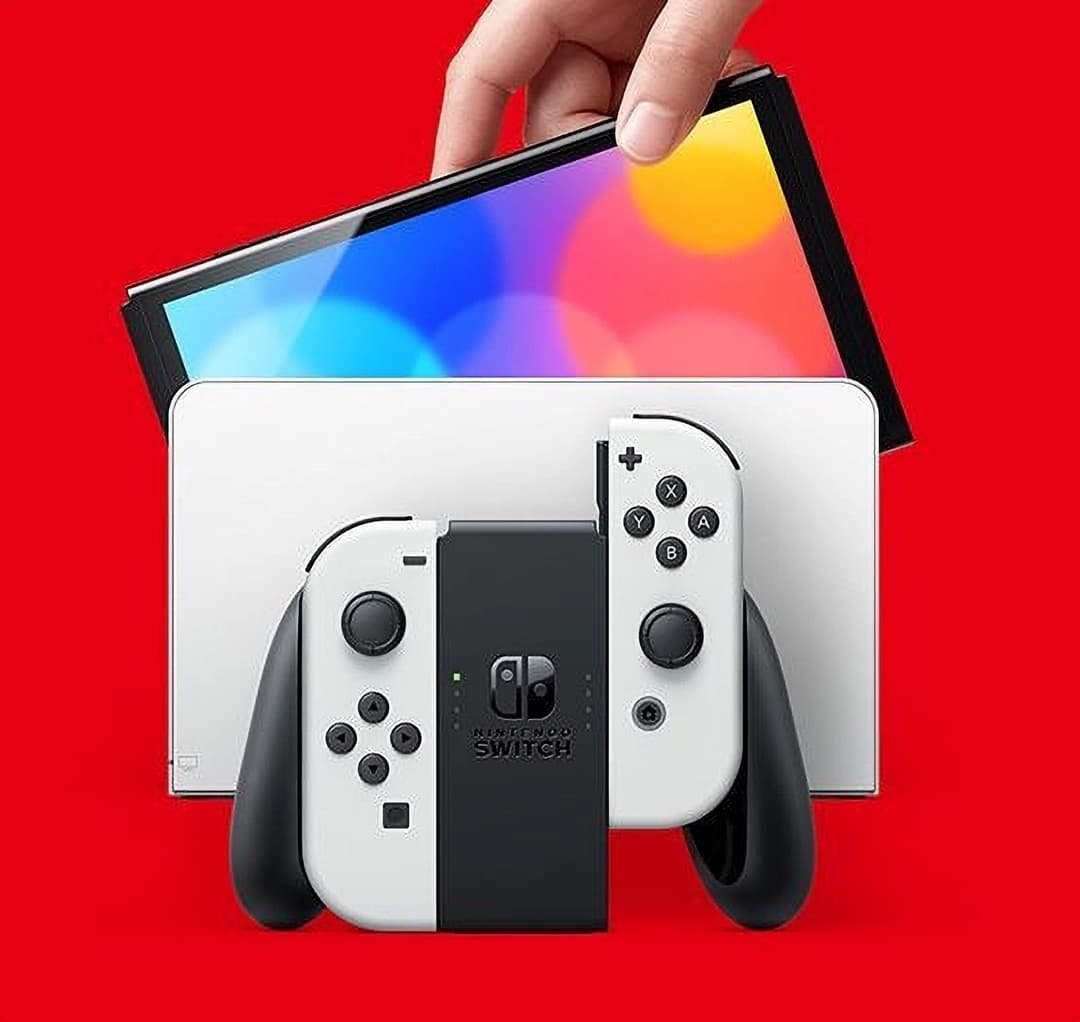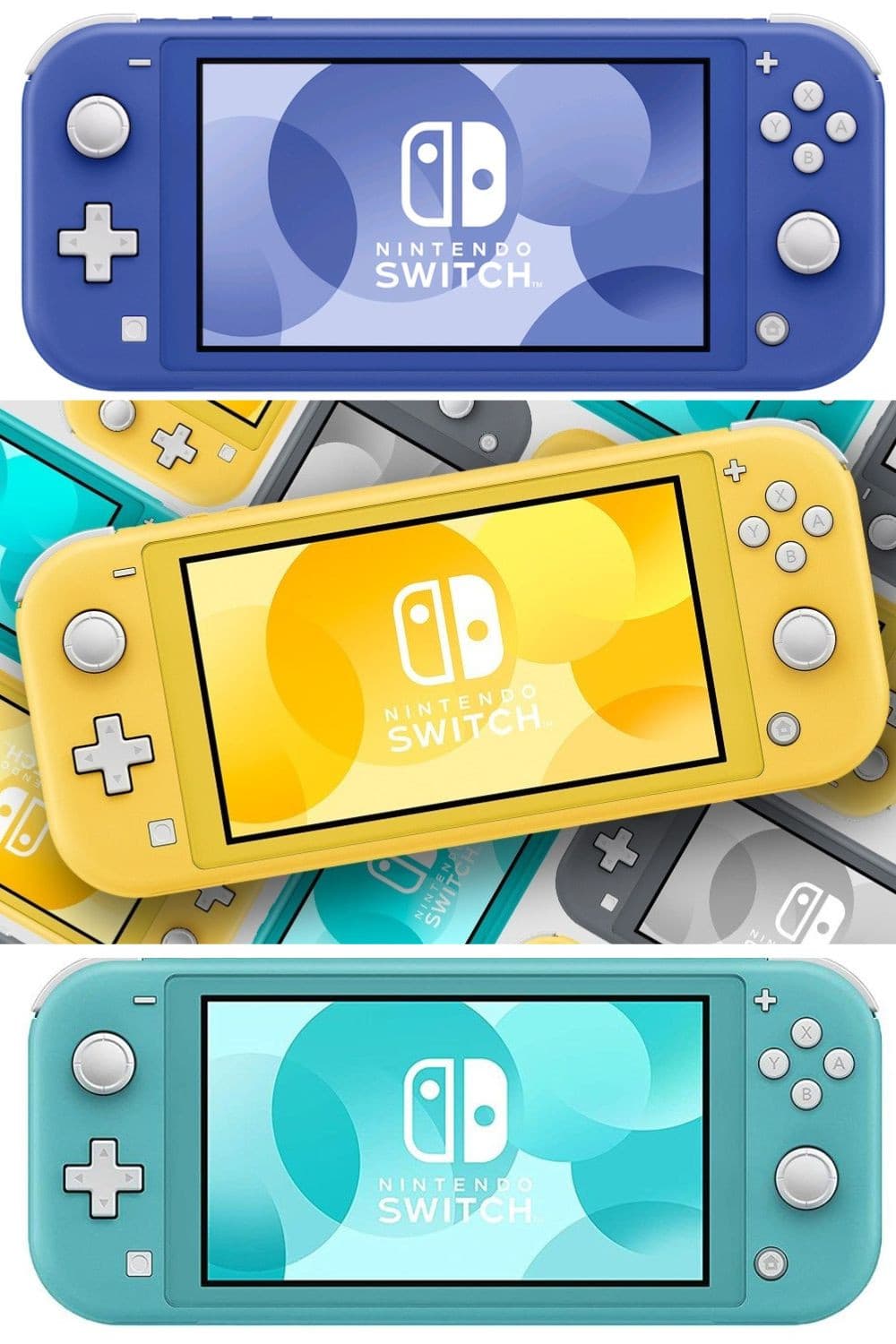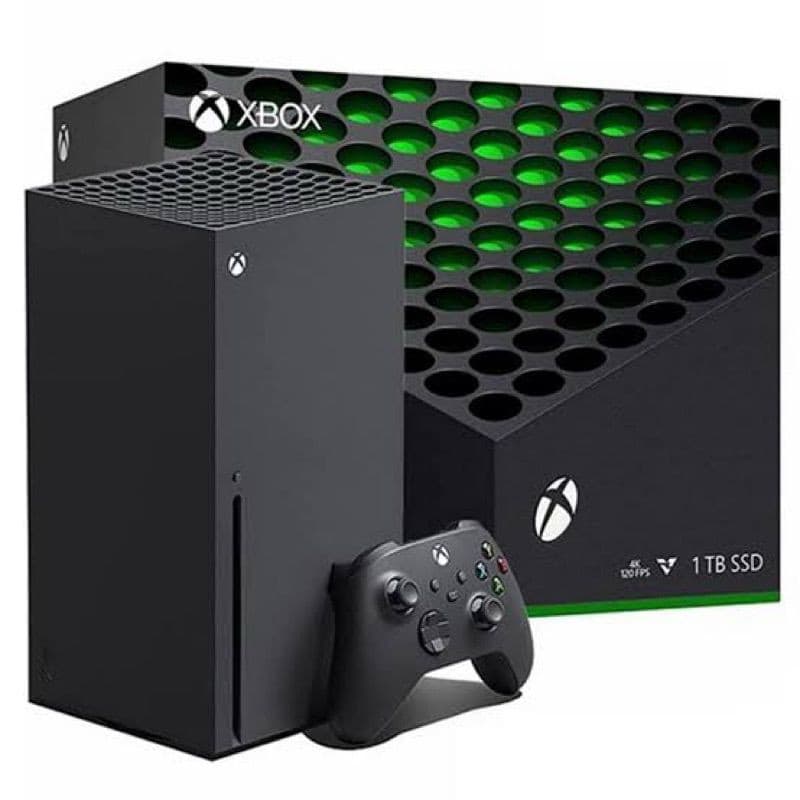

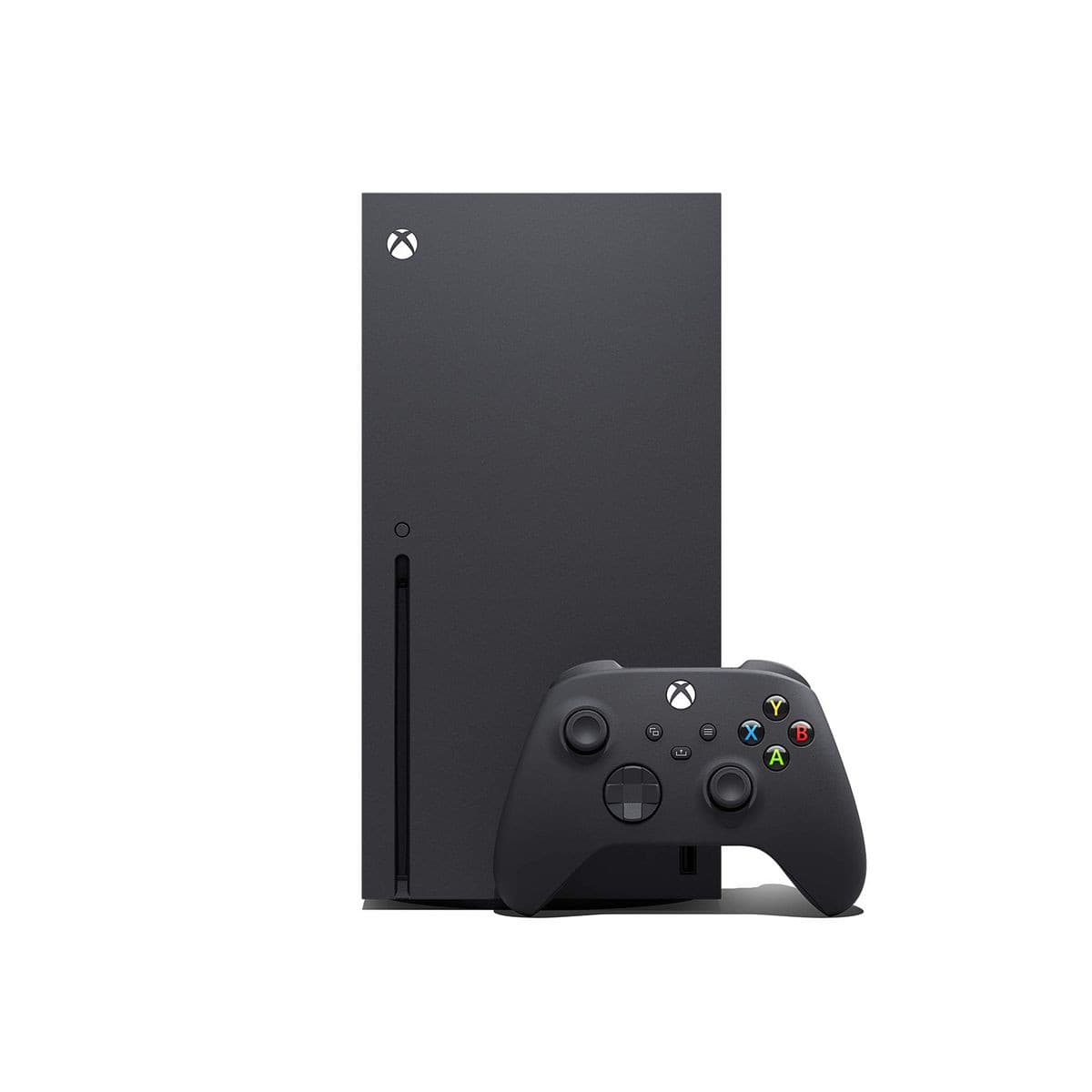
The Xbox Series X and Xbox Series S are the fourth generation of consoles in the Xbox series, succeeding the previous generation's Xbox One. Released on November 10, 2020, the higher-end Xbox Series X and lower-end Xbox Series S are part of the ninth generation of video game consoles, which also includes Sony's PlayStation 5, released the same month.[4]
Like the Xbox One, the consoles use an AMD 64-bit x86-64 CPU and GPU. Both models have solid-state drives to reduce loading times, support for hardware-accelerated ray-tracing and spatial audio, the ability to convert games to high-dynamic-range rendering using machine learning (Auto HDR), support for HDMI 2.1 variable refresh rate and low-latency modes, and updated controllers. Xbox Series X was designed to nominally render games in 2160p (4K resolution) at 60 frames per second (FPS). The lower-end, digital-only Xbox Series S, which has reduced specifications and does not include an optical drive, was designed to nominally render games in 1440p at 60 FPS, with support for 4K upscaling and ray tracing.[5] Xbox Series X/S are backwards-compatible with nearly all Xbox One-compatible games and accessories (including Xbox 360 and original Xbox games that were made backward-compatible with Xbox One); the newer hardware gives games better performance and visuals. At launch, Microsoft encouraged a "soft" transition between generations, similar to PC gaming, offering the "Smart Delivery" framework to allow publishers to provide upgraded versions of Xbox One titles with optimizations for Xbox Series X/S.
Critics praised the Xbox Series X/S for the hardware improvements over the Xbox One and Microsoft's emphasis on cross-generation releases, but believed that the games available at launch did not fully use the hardware capabilities. Xbox Series consoles are estimated to have sold over 28 million units worldwide as of June 2024.
Xbox head Phil Spencer said that Microsoft was prioritizing high frame rates and faster load times over higher resolutions; the Series X achieves this via the better-matched capabilities of the CPU and graphics processing unit.[31] Compared to the Xbox One X, the CPU is about four times as powerful and the GPU is twice as powerful.[32]
The Xbox Series X is powered by a custom 7 nm AMD SoC combining Zen 2 CPU and RDNA 2 GPU.[33] The custom Zen 2 CPU with eight cores running at a nominal 3.8 GHz or, when simultaneous multithreading (SMT) is used, at 3.66 GHz. One CPU core is dedicated to the underlying operating system.[17] The integrated GPU is also a custom unit based on AMD's RDNA 2 graphics architecture. It has a total of 56 compute units (CUs) with 3,584 cores, with 52 CUs and 3,328 cores enabled, and will run at a fixed 1.825 GHz. This unit is capable of 12.155 teraflops of computational power.[17][34][35] The unit ships with 16 GB of GDDR6 SDRAM, with 10 GB running at 560 GB/s primarily to be used with the graphics system and the other 6 GB at 336 GB/s to be used for the other computing functions. After accounting for the system software, about 13.5 GB of memory will be available for games and other applications, with the system software only drawing from the slower pool.[17] The Xbox Series X is intended to render games at 4K resolution at 60 frames per second, and can support up to 120 frames per second and can render up to 8K resolution.[17]
The Xbox Series X's console form is designed to be unobtrusive and minimalistic. It has a 15.1 cm × 15.1 cm (5.9 in × 5.9 in) footprint, is 30.1 cm (11.9 in) high, and weighs 4.45 kg (9.8 lb).[18] Designed to sit vertically, it can also be used on its side. Its front has the main power button and an Ultra HD Blu-ray drive.[17] The top of the unit is a single powerful fan. Spencer said that the console is as quiet as the Xbox One X.[36] The Series X includes an HDMI 2.1 output, the storage expansion slot, three USB 3.2 ports, and an Ethernet port.[37][17] The console does not include an infrared blaster or HDMI pass-through like the Xbox One line, supporting HDMI-CEC instead. An earlier leak had suggested a TOSLINK port for digital audio, but this was eliminated in the final design.[18][38] The console has an IR receiver in its controller pairing button next to the front USB port.[39]
Secure Payment
100% secure payment
Easy Returns
30 day return policy
The Xbox Series X and Xbox Series S are the fourth generation of consoles in the Xbox series, succeeding the previous generation's Xbox One. Released on November 10, 2020, the higher-end Xbox Series X and lower-end Xbox Series S are part of the ninth generation of video game consoles, which also includes Sony's PlayStation 5, released the same month.[4]
Like the Xbox One, the consoles use an AMD 64-bit x86-64 CPU and GPU. Both models have solid-state drives to reduce loading times, support for hardware-accelerated ray-tracing and spatial audio, the ability to convert games to high-dynamic-range rendering using machine learning (Auto HDR), support for HDMI 2.1 variable refresh rate and low-latency modes, and updated controllers. Xbox Series X was designed to nominally render games in 2160p (4K resolution) at 60 frames per second (FPS). The lower-end, digital-only Xbox Series S, which has reduced specifications and does not include an optical drive, was designed to nominally render games in 1440p at 60 FPS, with support for 4K upscaling and ray tracing.[5] Xbox Series X/S are backwards-compatible with nearly all Xbox One-compatible games and accessories (including Xbox 360 and original Xbox games that were made backward-compatible with Xbox One); the newer hardware gives games better performance and visuals. At launch, Microsoft encouraged a "soft" transition between generations, similar to PC gaming, offering the "Smart Delivery" framework to allow publishers to provide upgraded versions of Xbox One titles with optimizations for Xbox Series X/S.
Critics praised the Xbox Series X/S for the hardware improvements over the Xbox One and Microsoft's emphasis on cross-generation releases, but believed that the games available at launch did not fully use the hardware capabilities. Xbox Series consoles are estimated to have sold over 28 million units worldwide as of June 2024.
Xbox head Phil Spencer said that Microsoft was prioritizing high frame rates and faster load times over higher resolutions; the Series X achieves this via the better-matched capabilities of the CPU and graphics processing unit.[31] Compared to the Xbox One X, the CPU is about four times as powerful and the GPU is twice as powerful.[32]
The Xbox Series X is powered by a custom 7 nm AMD SoC combining Zen 2 CPU and RDNA 2 GPU.[33] The custom Zen 2 CPU with eight cores running at a nominal 3.8 GHz or, when simultaneous multithreading (SMT) is used, at 3.66 GHz. One CPU core is dedicated to the underlying operating system.[17] The integrated GPU is also a custom unit based on AMD's RDNA 2 graphics architecture. It has a total of 56 compute units (CUs) with 3,584 cores, with 52 CUs and 3,328 cores enabled, and will run at a fixed 1.825 GHz. This unit is capable of 12.155 teraflops of computational power.[17][34][35] The unit ships with 16 GB of GDDR6 SDRAM, with 10 GB running at 560 GB/s primarily to be used with the graphics system and the other 6 GB at 336 GB/s to be used for the other computing functions. After accounting for the system software, about 13.5 GB of memory will be available for games and other applications, with the system software only drawing from the slower pool.[17] The Xbox Series X is intended to render games at 4K resolution at 60 frames per second, and can support up to 120 frames per second and can render up to 8K resolution.[17]
The Xbox Series X's console form is designed to be unobtrusive and minimalistic. It has a 15.1 cm × 15.1 cm (5.9 in × 5.9 in) footprint, is 30.1 cm (11.9 in) high, and weighs 4.45 kg (9.8 lb).[18] Designed to sit vertically, it can also be used on its side. Its front has the main power button and an Ultra HD Blu-ray drive.[17] The top of the unit is a single powerful fan. Spencer said that the console is as quiet as the Xbox One X.[36] The Series X includes an HDMI 2.1 output, the storage expansion slot, three USB 3.2 ports, and an Ethernet port.[37][17] The console does not include an infrared blaster or HDMI pass-through like the Xbox One line, supporting HDMI-CEC instead. An earlier leak had suggested a TOSLINK port for digital audio, but this was eliminated in the final design.[18][38] The console has an IR receiver in its controller pairing button next to the front USB port.[39]



